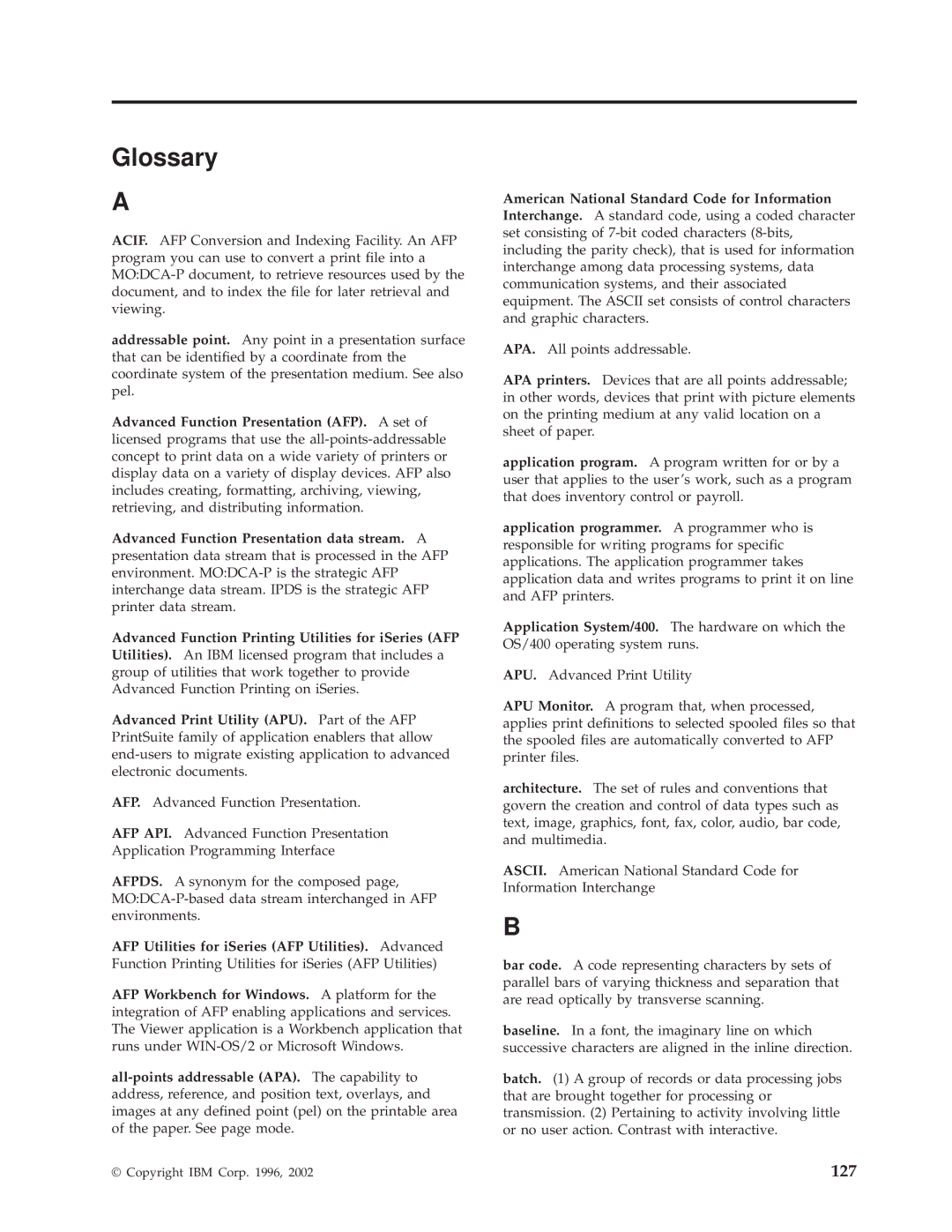Glossary
A
ACIF. AFP Conversion and Indexing Facility. An AFP program you can use to convert a print file into a
addressable point. Any point in a presentation surface that can be identified by a coordinate from the coordinate system of the presentation medium. See also pel.
Advanced Function Presentation (AFP). A set of licensed programs that use the
Advanced Function Presentation data stream. A presentation data stream that is processed in the AFP environment.
Advanced Function Printing Utilities for iSeries (AFP Utilities). An IBM licensed program that includes a group of utilities that work together to provide Advanced Function Printing on iSeries.
Advanced Print Utility (APU). Part of the AFP PrintSuite family of application enablers that allow
AFP. Advanced Function Presentation.
AFP API. Advanced Function Presentation Application Programming Interface
AFPDS. A synonym for the composed page,
AFP Utilities for iSeries (AFP Utilities). Advanced Function Printing Utilities for iSeries (AFP Utilities)
AFP Workbench for Windows. A platform for the integration of AFP enabling applications and services. The Viewer application is a Workbench application that runs under
American National Standard Code for Information Interchange. A standard code, using a coded character set consisting of
APA. All points addressable.
APA printers. Devices that are all points addressable; in other words, devices that print with picture elements on the printing medium at any valid location on a sheet of paper.
application program. A program written for or by a user that applies to the user's work, such as a program that does inventory control or payroll.
application programmer. A programmer who is responsible for writing programs for specific applications. The application programmer takes application data and writes programs to print it on line and AFP printers.
Application System/400. The hardware on which the OS/400 operating system runs.
APU. Advanced Print Utility
APU Monitor. A program that, when processed, applies print definitions to selected spooled files so that the spooled files are automatically converted to AFP printer files.
architecture. The set of rules and conventions that govern the creation and control of data types such as text, image, graphics, font, fax, color, audio, bar code, and multimedia.
ASCII. American National Standard Code for Information Interchange
B
bar code. A code representing characters by sets of parallel bars of varying thickness and separation that are read optically by transverse scanning.
baseline. In a font, the imaginary line on which successive characters are aligned in the inline direction.
batch. (1) A group of records or data processing jobs that are brought together for processing or transmission. (2) Pertaining to activity involving little or no user action. Contrast with interactive.
© Copyright IBM Corp. 1996, 2002 | 127 |
